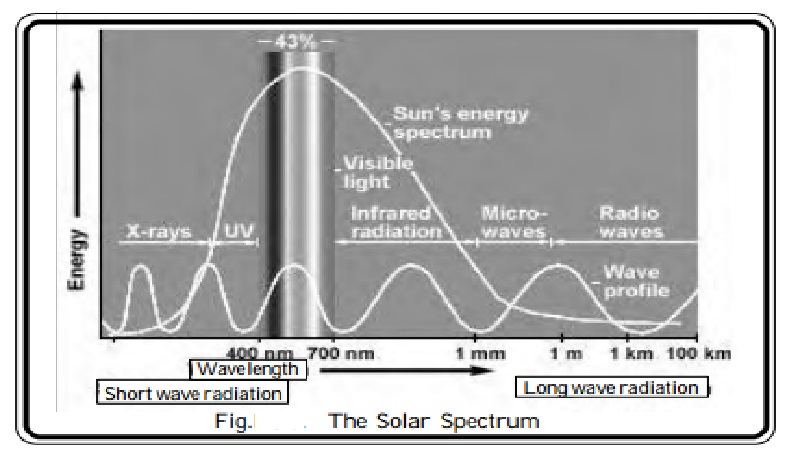Chapter: 11th 12th std standard Geography earth space Higher secondary school College Notes
Atmosphere and Solar Radiation

ATMOSPHERE AND SOLAR RADIATION
The Earth is surrounded by an atmosphere. It is a blanket of gases and has no definite outer edge. It gradually becomes thinner and it merges into space. Over 80% of atmospheric gases are held by gravity with in 20 kilometers of the Earth's surface. The physical and chemical structure of the atmosphere, the way that the gases interact with solar energy, and the physical and chemical interactions between the atmosphere, land, and oceans all combine to make the atmosphere an integral part of the Earth system.
The Sun: The Sun is a star. It consists primarily of hydrogen at temperatures high enough to cause nuclear fusion. Some 120 million tons of matter, mostly hydrogen, are converted into helium on the sun every minute. The size of the Sun determines its temperature and the amount of energy radiated. This electromagnetic energy from the Sun comes to Earth in the form of radiation. The Sun radiates energy equally in all directions, and the Earth intercepts and receives part of this energy. The Sun's energy is the primary source of energy for all surface phenomena and life on Earth. This energy is the main reason for the immense diversity of life forms that are found on the Earth. We will now study in detail about the solar energy and its interplay with the composition of the Earth's atmosphere.
Solar Spectrum: The range of electromagnetic energy emitted by the Sun is known as the solar spectrum, and lies mainly in three regions : ultraviolet, visible, and infrared. While the Sun does emit ultraviolet radiation, the majority of solar energy comes in the form of 'light' and 'heat', in the visible and infrared regions of the electromagnetic spectrum. Light is special to humans and many other animals due to the evolution of the eye, a sensory organ that detects this part of the solar spectrum.
We are all familiar with the rainbow of colors, the range of different colors that makes up sunlight. The best way to visualize this concept, and the most common scientific demonstration, is the image of a glass prism splitting up white light into the colors. When raindrops act as prisms, we see a rainbow. While the eye effectively perceives and distinguishes visible light, infrared is perceived as heat. This is also called 'heat' radiation, because although we cannot see infrared, we can feel its presence as heat. The skin converts the heat into energy of the molecules. Infrared plays an important role in the temperature of the Earth and its atmosphere, and in turn, the climate of the Earth.
There are interactions occurring constantly in the atmosphere with the solar radiation. This results in a complex and delicately balanced system, which is crucial to the continuation of present life forms on Earth. The following two interactions that is crucial to the maintenance of life on Earth:
1. The atmosphere acts as a filter, absorbing and reflecting portions of the electro magnetic spectrum, such as the ultraviolet region, region, that are harmful to humans and other life forms.
2. The atmosphere provides a natural 'warming effect', maintaining the temperatures and climates in which life forms on the Earth have evolved to survive.
The atmosphere controls the amount of solar radiation reaching the surface of the Earth, and regulates the amount of radiation from the Earth escaping into space. Thus a slight change in the concentration of certain gases could upset the balance of reactions and be detrimental to life on the Earth, as we all know. So, let us learn first about the composition of the atmosphere in detail and later discuss its relevance to two major environmental problems; stratospheric ozone depletion and global climate change.
Chemical Composition of the Atmosphere
Related Topics